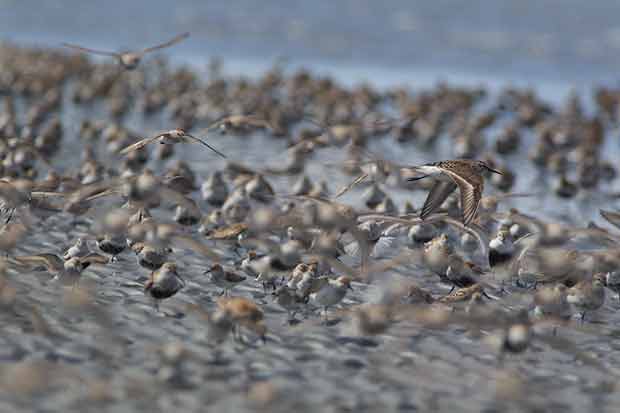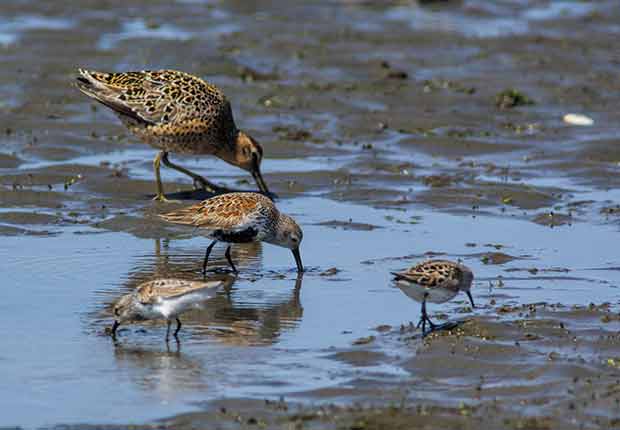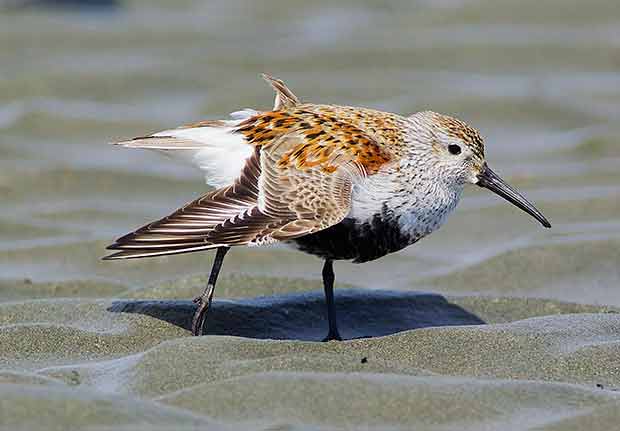Trying to photograph the shorebird Spring migration has become an annual ritual for me even though I long ago resigned myself to the fact that my pictures will never capture what most attracts me to the shore line. Of course, if I actually knew what that was this blog entry would have been up several days ago and not sitting in the rewrite pile for several days. I always find it harder to write when I don’t know what I want to say.
There is some ineffable force that draws me to these migrations. I feel it when I’m there, but the more I think about it the less sure I am what it is that I feel. I suspect biologists would say this compelling force is simply a manifestation of the urge to reproduce, which it is, of course, but it seems much more than that.
Whatever it is, it can’t be caught in traditional photography. There is something chaotic about it that refuses to be captured by even the fastest lenses. Point your camera at a flock and it’s sheer luck if one of the thousands of birds present is in focus.

Of course, biologists might simply point out that traveling in large flocks is a powerful defensive mechanism and it’s easy to see the protection that a large flock offers against predators in the photographs. It’s virtually impossible to pick out a single bird and focus on it.
Even at a considerable distance it’s impossible to keep the whole flock in focus, much less keep them in the camera frame.

No doubt this is a “bad” picture by traditional standards, violating all the rules I used to try to teach my yearbook photographers, but in a sense it captures “reality” better than a photograph following traditional rules would. When a flock flies by this closely, it is just a blur no matter how hard you try to follow it.
It’s only when they begin to land that you realize just how diverse these flocks really are,

usually consisting of several different species,

though this particular flock was less diverse than others I’ve seen, consisting mainly of the larger Short-Billed Dowitchers, medium-sized Dunlin, and smaller Western Sandpipers.
It seems truly ironic that the only time I can get a “good” picture of the migration is when a bird pauses to stretch it wings for a moment, becomes an individual,

no longer a members of a flock. This individual beauty is a part of the whole and part of what attracts me, especially as a photographer, but only a small part. It’s unlikely I will ever get better shots than I’ve already gotten in past years, but I’ll still be coming back for years.
Despite seeing it over and over, I’m still awed by the birds’ flights. How can take that many birds take off and land in unison? Who, or what, decides when they take off or when they land? Surely a flock this size can’t have a single leader, can it? What keeps them from flying into each other? If that many cars started up all at once and accelerated like that you’d have to spend months hauling them away.
If I were truly a Transcendentalist, I suppose I would see it as a manifestation of the Oversoul, that Divine force that penetrates Nature. If I were truly a Taoist, I would probably see it as a manifestation of Chi.

It must be Oversoul – there is no other way to explain it logically. Love the clarity of the last two photos.